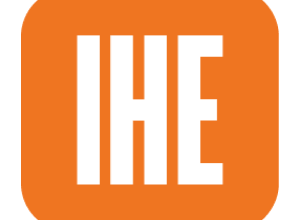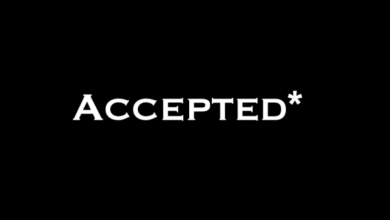Guide To Learning Management Systems: Everything You Need Premium Scholorships Info
Guide To Learning Management Systems: Features And Benefits
Learning Management Systems (LMSs) have revolutionized the way education and training are delivered in both academic and corporate settings. This comprehensive guide to Learning Management Systems will cover what it is, its uses, how it works, various deployment types, payment options, benefits, integration with content management systems, and the differences between a Learning Experience Platform (LXP) and an LMS.
What Is A Learning Management System?
An LMS is a software application designed to manage, deliver, and track educational courses, training programs, or Learning and Development programs. It acts as a centralized hub for all educational activities, making it easier for educators, administrators, and learners to access and manage learning content. Key features of an LMS include:
- Content management
Organizing and storing learning materials. - Course management
Creating, scheduling, and managing courses. - User management
Enrolling and managing learners and instructors. - Assessment and evaluation
Conducting tests, quizzes, and assignments. - Tracking and reporting
Monitoring learner progress and generating reports.
What Are Learning Management Systems Used For?
LMS platforms are versatile tools used across various sectors for multiple purposes:
Corporate Training
Companies use LMSs to train employees, ensuring they are up-to-date with the latest skills, compliance requirements, and industry standards. This includes onboarding new employees, continuous professional development, and specialized training programs.
Academic Education
Schools, colleges, and universities use LMSs to deliver online courses, manage classroom learning, and provide supplemental resources. This allows for a blended learning approach, combining traditional classroom methods with online activities.
Professional Certification
Organizations and educational institutions offer certification programs through LMSs, allowing learners to gain certifications that can enhance their career prospects.
Customer Training
Companies use LMSs to educate customers about their products and services, ensuring they can use them effectively and efficiently.
How Do Learning Management Systems Work?
LMS platforms provide a digital environment where learning materials can be uploaded, accessed, and interacted with. Here’s a breakdown of how they function:
- Content delivery
Educators and trainers can upload various types of learning materials, such as videos, documents, presentations, and quizzes. These materials are organized into courses or modules that learners can access. - User management
Administrators can enroll learners into specific courses, assign roles (e.g., student, instructor), and manage user profiles. - Assessment and evaluation
LMS platforms offer tools for creating and administering quizzes, tests, and assignments. They also provide grading and feedback mechanisms to evaluate learner performance. - Tracking and reporting
One of the most powerful features of an LMS is its ability to track learner progress and generate detailed reports. This helps administrators and educators understand how learners are performing and identify areas for improvement.
Types Of LMS Deployments
LMS platforms can be deployed in various ways, each with its own advantages and disadvantages:
Cloud-Based LMS
These systems are hosted on the vendor’s servers and accessed via the internet. They offer flexibility, scalability, and ease of use, with the vendor handling maintenance and updates.
Self-Hosted LMS
Installed and maintained on the organization’s own servers, self-hosted LMSs provide more control and customization options but require more IT resources for maintenance and support.
Open-Source LMS
These are freely available LMS platforms that can be customized according to the organization’s needs. While they offer flexibility and cost savings, they require technical expertise to implement and maintain.
Commercial LMS
These are proprietary systems offered by vendors with various support and features. These systems often come with robust customer support and advanced features but may be more expensive.
What Are The Payment Options For LMSs?
Payment options for LMS platforms vary, allowing organizations to choose the best fit for their budget and needs:
- Subscription-based
Monthly or annual payments for access to the LMS, often based on the number of users or features required. - Pay-per-user
Charges based on the number of users accessing the system, which can be cost-effective for smaller organizations or those with fluctuating user numbers. - One-time license fee
A single payment for perpetual use of the LMS software, suitable for organizations that prefer a long-term investment. - Freemium
Basic features are available for free, with advanced features offered through paid plans. This model allows organizations to start with a free plan and upgrade as their needs grow.
What Are The Benefits Of An LMS?
Using an LMS offers numerous benefits, including:
Centralized Learning
All learning materials and resources are stored in one place, making it easier to manage and access content.
Accessibility
Learners can access courses anytime, anywhere, from any device, promoting flexibility and convenience.
Tracking And Reporting
Administrators can easily track learner progress, generate reports, and analyze data to improve the learning experience.
Cost-Effective
An LMS reduces the need for physical classroom space and printed materials, resulting in cost savings.
Scalability
Easily scalable to accommodate more learners as needed, allowing organizations to grow their training programs without significant additional costs.
Using Content Management Systems With LMSs
Integrating content management systems (CMSs) with LMS platforms can enhance the learning experience by:
- Streamlining content creation
Easier creation and management of learning materials, ensuring content is up-to-date and relevant. - Enhanced User Experience
Providing a seamless interface for accessing both learning and content resources, improving usability and engagement. - Improved collaboration
Facilitating collaboration between content creators and educators, leading to richer, more diverse learning materials.
Learning Experience Platforms Vs. LMSs
While LMS platforms focus on the administration and delivery of learning content, Learning Experience Platforms (LXP) offer a more learner-centric approach:
Personalized Learning Paths
This is the creation of individualized learning experiences based on learner preferences and behaviors, enhancing engagement and retention.
Social Learning
This encourages interaction and collaboration among learners, fostering a sense of community and shared knowledge.
User-Generated Content
This allows learners to contribute content and share knowledge, creating a more dynamic and participatory learning environment.
Advanced Analytics
These provide deeper insights into learner engagement and performance, enabling more effective interventions and support.
Conclusion
Understanding the various aspects of Learning Management Systems is crucial for organizations looking to enhance their training and educational programs. Whether you are considering implementing an LMS or optimizing your existing system, this comprehensive guide covers all the essential elements to help you make informed decisions. By leveraging the power of an LMS as outlined in this guide to Learning Management Systems, organizations can create effective, efficient, and engaging learning experiences for their learners.






